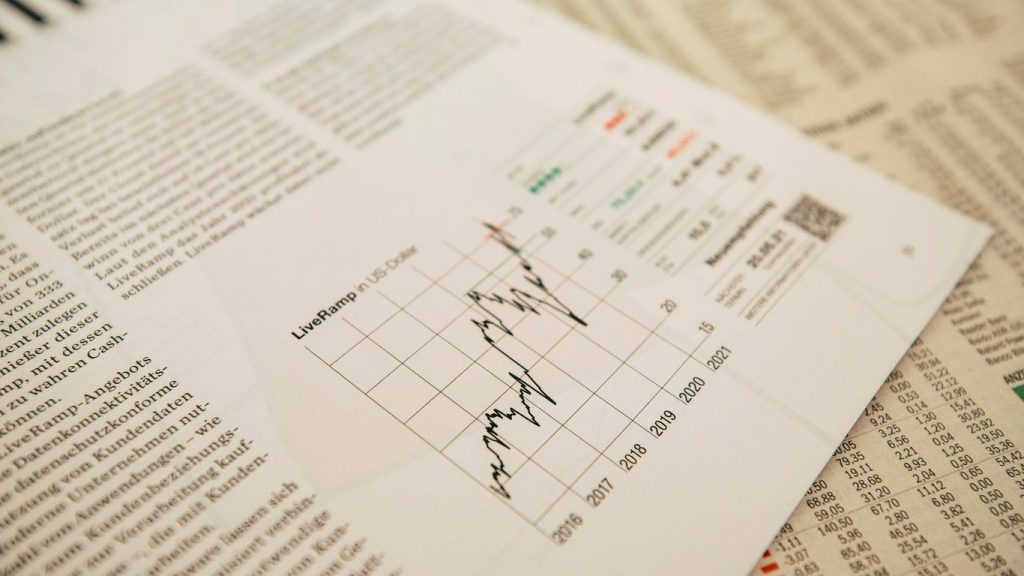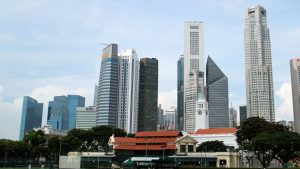Thinking about investing in Asian markets for income? The Schroder Asian Income Fund is one option that pops up. This review, looking at things as they stand in 2025, aims to break down what this fund is all about. We’ll cover its investment style, how it’s been doing, what it costs, and whether it might fit into your personal investment plan. It’s good to get a clear picture before putting your money into any fund, and that’s what we’re here to help with.
Key Takeaways
- The Schroder Asian Income Fund focuses on generating income by investing in Asian equities, aiming for a balance between income and capital growth.
- Its investment strategy typically involves selecting companies with strong dividend-paying histories and potential for future income generation.
- Performance is usually measured against benchmarks like the MSCI AC Asia ex Japan Index, with historical returns and volatility being key factors for investors to consider.
- Investors should carefully review the fund’s fees, including management fees and other expenses, as these can impact overall net returns.
- The fund’s suitability depends on an individual’s risk tolerance, investment goals, and how it fits within a broader diversified portfolio.
Understanding the Schroder Asian Income Fund
Fund Overview and Investment Strategy
The Schroder Asian Income fund is designed to provide investors with a regular income stream, primarily from equities and fixed income securities located in the Asia-Pacific region, excluding Japan. The fund’s investment strategy centers on identifying high-quality companies with strong fundamentals and attractive valuations. It employs a bottom-up approach, meaning each company is assessed individually based on its resilience, management quality, and market position. This focus aims to build a portfolio of businesses that can sustain growth and generate consistent returns over the long term. The fund manager, with a seasoned team, has a long-term view of the Asia Pacific markets, often highlighting consumer staples and companies with solid innovation capabilities as key areas of interest. This approach seeks to tap into the region’s growing consumption and economic development.
Key Holdings and Sector Allocation
While specific holdings can change, the Schroder Asian Income fund typically invests in a diversified range of companies across various sectors within the Asia-Pacific region. Historically, the fund has shown an allocation towards consumer staples, recognizing the stable demand for these products in the region. Other sectors that may feature include pharmaceuticals and telecommunications, reflecting the diverse economic landscape of Asia. The fund’s strategy involves identifying companies with dominant market share in niche industries, solid innovation, and a positive corporate culture. This selective approach aims to build a robust portfolio that balances income generation with capital appreciation potential. For a detailed look at current holdings, it’s advisable to consult the fund’s latest fact sheet Schroder Asian Income SGD X Dis.
Performance Benchmarks and Track Record
Evaluating the performance of the Schroder Asian Income fund involves comparing its returns against relevant benchmarks. These benchmarks are typically indices that represent the performance of the broader Asian equity and fixed income markets. The fund’s track record is a key indicator of its ability to meet its investment objectives over time. Investors often look at historical returns, volatility, and consistency of income payouts when assessing the fund’s performance. Understanding how the fund has performed relative to its peers and the wider market provides valuable insight into its effectiveness. For those seeking to understand the financial landscape and investment options in Singapore, resources are available to help simplify complex financial topics.
Investment Approach and Philosophy
Focus on Asian Markets
Schroder Asian Income Fund zeroes in on investment opportunities across Asia-Pacific, covering developed and emerging markets. The main idea is to benefit from the region’s economic and demographic growth. The fund tends to allocate capital across sectors that are showing resilience or stable growth, such as financials, technology, and consumer staples.
- Investments span multiple countries, which adds regional diversification.
- The fund avoids heavy concentration in a single market to spread out capital risk.
- By tapping into trends such as rising incomes and urbanization, the fund aims for long-term growth.
Learn more about diversification and regional investment opportunities through this smarter financial guidance resource.
Income Generation Strategy
Generating a steady income for investors is central to the fund’s philosophy. The managers look for shares in companies that pay reliable and attractive dividends, often in sectors known for consistent cash flows. Alongside equities, the fund also considers fixed income instruments to steady the income stream through various market cycles.
| Income Source | Typical Allocation (%) |
|---|---|
| Dividend-paying Stocks | 60-75 |
| Fixed Income/Bonds | 20-35 |
| Cash/Cash Equivalents | 0-10 |
- Regular dividend distributions appeal to investors seeking passive income.
- The mix of equities and bonds helps reduce swings in returns.
- Fund managers adjust allocations based on yield outlook and risks within the region.
The focus on steady distributions makes the fund a candidate for those prioritizing income, not just capital gains.
Risk Management Techniques
Risks exist with all investment, especially in markets as dynamic as Asia. The Schroder Asian Income Fund uses several methods to help protect investor capital while aiming for growth and income.
- Diversification across sectors and countries to limit exposure to sharp downturns in any single market.
- Maintaining a balance between dividend-paying stocks and bonds to cushion against market drops.
- Ongoing monitoring for changes in interest rates, political events, and currency trends, making adjustments to keep the risk profile in line with the fund’s goals.
A smoother investment ride with active adjustments is a core part of the approach, supporting resilient returns even when markets get rough. To see how volatility and risk can be managed, explore the strategy for reducing volatility and protecting capital.
Fund Performance Analysis

Historical Returns and Volatility
When looking at the Schroder Asian Income fund, it’s important to see how it has performed over time. Past performance is not a guarantee of future results, but it does give us an idea of how the fund handles different market conditions. We need to consider both the gains it has made and how much the value of the fund has fluctuated. This helps us understand the risk involved.
Generally, funds focused on Asian markets can experience higher volatility compared to more developed markets. This is due to a variety of factors, including economic growth rates, political stability, and currency fluctuations in the region. For investors seeking income, understanding this volatility is key to managing expectations.
Comparison with Peer Funds
To get a clearer picture of the Schroder Asian Income fund’s performance, it’s useful to compare it against similar funds in the same category. This means looking at other funds that also focus on Asian income generation. We can see how its returns stack up and if its investment strategy is more or less effective than its competitors. This comparison helps in assessing if the fund is a strong contender within its investment space.
When comparing, we should look at metrics like:
- Annualized returns over different periods (1, 3, 5 years).
- Risk-adjusted returns, such as the Sharpe ratio.
- How the fund performed during market downturns.
- The consistency of its performance relative to its peers.
Dividend Payouts and Consistency
For an income fund, the regularity and amount of dividend payouts are critical. Investors in this fund are likely looking for a steady stream of income. Therefore, we need to examine how consistently the fund has distributed dividends and whether these payouts have grown or remained stable over time. This aspect directly relates to the fund’s objective of providing income to its investors. A fund that consistently pays out dividends, even during challenging market periods, can be particularly attractive for income-focused portfolios. You can use tools to help plan your retirement income, which often includes dividends from investments like this fund [724c].
A reliable dividend history suggests a well-managed fund that can generate distributable income from its underlying investments, even when market conditions are not ideal. This consistency is a hallmark of a strong income-generating strategy.
Fees and Charges Associated
When looking at any investment fund, it’s really important to get a handle on the costs involved. These fees can really eat into your returns over time, so it’s good to know what you’re signing up for with the Schroder Asian Income Fund. There are a few different types of charges to consider, and understanding them helps you figure out the real cost of investing.
Management Fees and Other Expenses
The main cost you’ll typically see is the annual management fee. For the Schroder Asian Income Fund, this fee is charged directly to the fund’s capital. While this might seem like a good thing because it can boost distributable income in the short term, it’s important to remember that it does reduce the fund’s overall asset value. It’s a bit of a trade-off, and it’s something to keep an eye on. Beyond the management fee, there might be other operational expenses that the fund incurs, which also get factored into the overall cost of holding the investment.
Impact of Fees on Net Returns
It’s pretty straightforward: the higher the fees, the lower your net return will be. Even small differences in annual fees can add up significantly over the years. For example, a 1% difference in fees on a $10,000 investment over 10 years could mean thousands of dollars less in your pocket. It’s why comparing the total expense ratio (TER) of different funds is a smart move. This ratio gives you a clearer picture of all the ongoing costs. Remember, performance data often doesn’t include these costs, so it’s up to you to factor them in. Thinking about how these costs affect your potential gains is a key part of smart investing.
Subscription and Redemption Costs
When you buy into or sell out of a fund, there can sometimes be associated costs. These are often called subscription fees (when you buy) or redemption fees (when you sell). While many funds have moved away from these, it’s still worth checking the fund’s documentation to see if they apply. These costs are separate from the ongoing management fees and can impact the amount of money you actually get invested or the amount you receive when you decide to sell your units. It’s also worth noting that performance figures usually don’t account for these transaction costs, so you’ll need to factor them in yourself when calculating your actual investment gains or losses. Understanding these upfront and exit costs is just as important as knowing the ongoing charges. It’s all part of getting a full picture of the investment’s cost structure. For those looking to manage their overall financial picture, understanding how various charges impact your net worth is important, and this includes looking into things like personal tax planning.
It’s always a good idea to read the fund’s prospectus or Key Investor Information Document (KIID) to get the most accurate and up-to-date information on all fees and charges. This will give you a complete breakdown of what to expect.
Suitability for Investors

Deciding if the Schroder Asian Income Fund aligns with your financial objectives is a key step. It’s not a one-size-fits-all situation, and understanding your own financial picture is important. This fund focuses on Asian markets, which can offer growth but also come with specific risks. If you’re looking for income and have a medium to long-term outlook, it might be a good fit. However, if you need quick access to your money or are very risk-averse, you might want to look elsewhere. It’s always a good idea to consider how this fund fits into your broader investment plan. For those interested in understanding the financial landscape in Singapore, there are resources available to help you make informed decisions stay informed about the dynamic financial landscape in Singapore.
Investor Profile and Risk Tolerance
This fund is generally suited for investors who are comfortable with the inherent risks of equity investments in emerging markets. Asia’s economic growth is dynamic, but it can also be volatile. Investors should be prepared for potential fluctuations in value and understand that there is no guarantee of principal protection. If you’ve had negative experiences with investing in the past, perhaps due to a lack of guidance during market downturns, it’s important to approach this fund with a clear understanding of its strategy and your own comfort level with risk. A long-term investment horizon is generally recommended for this fund.
Role in a Diversified Portfolio
Adding the Schroder Asian Income Fund to a diversified portfolio can provide exposure to the growth potential of Asian economies. It can complement investments in more developed markets, offering a different set of opportunities and risks. The fund’s focus on income generation can also be a valuable component for investors seeking regular payouts. However, it’s important to ensure that this allocation doesn’t make your overall portfolio too concentrated in one region or asset class. Balancing this with other investments is key to managing overall risk.
Long-Term Investment Potential
Asia’s economic trajectory, driven by factors like a growing population and increasing urbanization, suggests significant long-term potential. Companies in this region are often at the forefront of innovation and consumer demand. By investing in a fund like Schroder Asian Income, you’re tapping into this growth. The fund’s strategy aims to identify quality companies with sustainable growth, which can contribute to long-term capital appreciation and consistent income. Remember, the Schroder Asian Growth Fund may distribute more than its income and realized gains, potentially reducing the initial investment amount Schroder Asian Growth Fund may distribute more than its income.
Schroder Asian Income Fund Review [2025] Considerations
As we look ahead to 2025, it’s a good time to consider the Schroder Asian Income Fund within the broader context of Asian markets and your own investment goals. The economic landscape in Asia is always shifting, and understanding these dynamics is key. This fund focuses on generating income from investments across various Asian economies.
Market Outlook for Asian Equities
When thinking about Asian equities for 2025, there are a few things to keep in mind. Some reports suggest that certain stock picks in China, for instance, have been a drag on performance for similar funds in the past. This highlights the importance of diversification within the Asian region itself. It’s also worth noting that while the Schroder Asian Income Fund is considered suitable for an Asian allocation in a diversified portfolio, investments in emerging markets do carry their own set of risks. We’ve seen that some funds have experienced declines in net asset value, so keeping an eye on the overall market health is important. For those interested in understanding more about specific Asian investment opportunities, there are discussions available with fund managers focusing on the sector’s outlook [7442].
Potential Benefits and Drawbacks
One of the main draws of a fund like this is its focus on income generation, which can be appealing for investors seeking regular returns. The Schroder AsiaPacific SDP Retail fund, for example, has been noted for offering a potential attractive entry point due to its long-term outperformance and a wide discount, suggesting value for investors. However, it’s not all smooth sailing. As mentioned, performance can be affected by specific market conditions or country-specific issues within Asia. It’s always wise to balance the potential for income with an awareness of the inherent risks.
Regulatory Environment in Asia
The regulatory environment across Asia can vary significantly from country to country. This can impact how businesses operate and, consequently, how investment funds perform. Staying informed about any changes or developments in these regulations is part of a thorough review process. For instance, understanding financial guidance and resources available in specific regions, like Singapore [b4c3], can provide a clearer picture of the operational landscape for companies and funds operating there. This due diligence helps in assessing the overall stability and predictability of the investment environment.
Thinking about the Schroder Asian Income Fund for 2025? We’ve broken down what you need to know in our latest review. Learn about the key factors to consider before investing. Ready to make a smart choice? Visit our website today for a complete guide and expert insights!
Wrapping Up Your Investment Journey
So, after looking at all these different options, it’s clear that investing in Asia, especially with a focus on income, can be a smart move. Whether you’re just starting out or have been investing for a while, understanding the market and choosing the right strategy is key. It’s not always easy, and sometimes things don’t go exactly as planned, but with a bit of research and a clear goal, you can build a solid investment portfolio. Remember to keep an eye on how things are changing and adjust your approach as needed. Investing is a marathon, not a sprint, and staying informed is half the battle.
Frequently Asked Questions
What is the main goal of the Schroder Asian Income Fund?
The Schroder Asian Income Fund aims to provide investors with a regular income stream. It does this by investing in companies based in Asia that are expected to pay out dividends.
How does the fund choose its investments?
The fund’s managers look for companies in Asia that have a history of paying dividends and are expected to continue doing so. They also consider the company’s financial health and the potential for growth.
What kind of returns has the fund historically provided?
The fund’s past performance can be checked against its benchmark. It’s important to remember that past results don’t guarantee future outcomes, but they can give you an idea of how the fund has done over time.
Are there any fees associated with investing in this fund?
Yes, like most investment funds, there are fees involved. These typically include management fees and other operating expenses, which can affect your overall returns.
Is this fund suitable for everyone?
This fund might be a good fit for investors looking for income and who are comfortable with the risks of investing in Asian markets. It’s always best to consider your own financial goals and how this fund fits into your broader investment plan.
What is the outlook for Asian markets that this fund invests in?
The outlook for Asian markets can change. Factors like economic growth, political stability, and global economic trends all play a role. Investors should stay informed about these factors when considering the fund.







